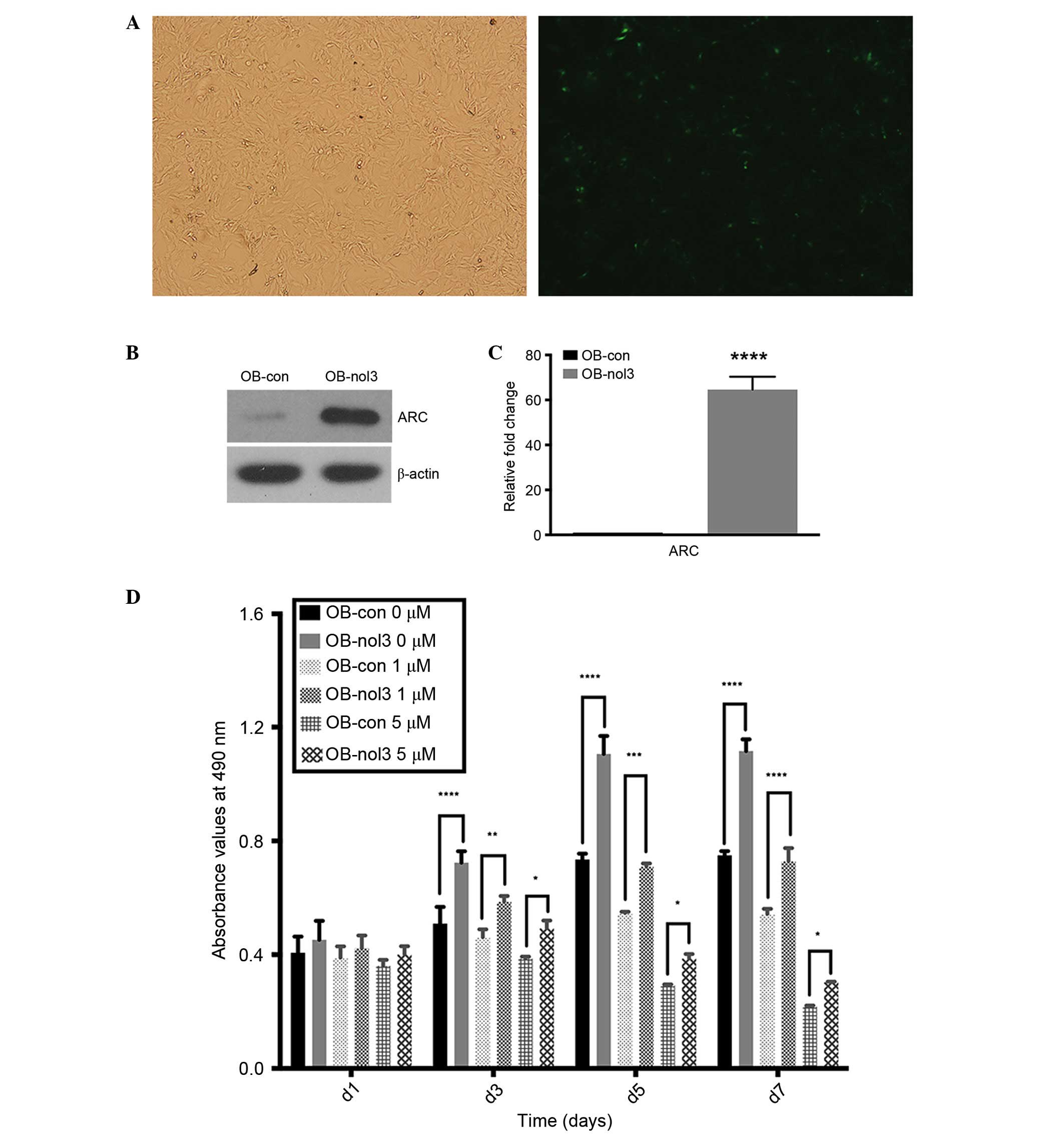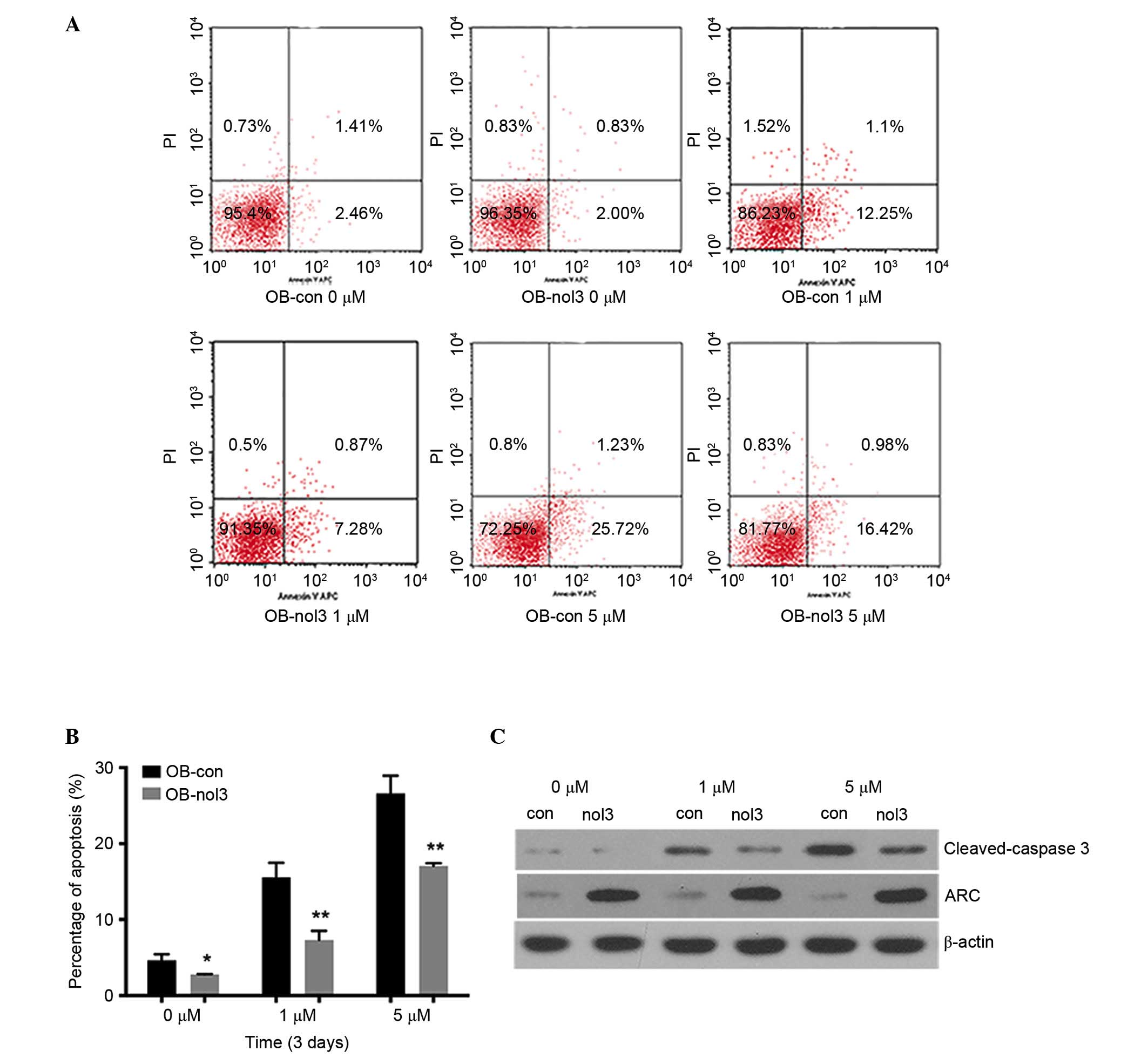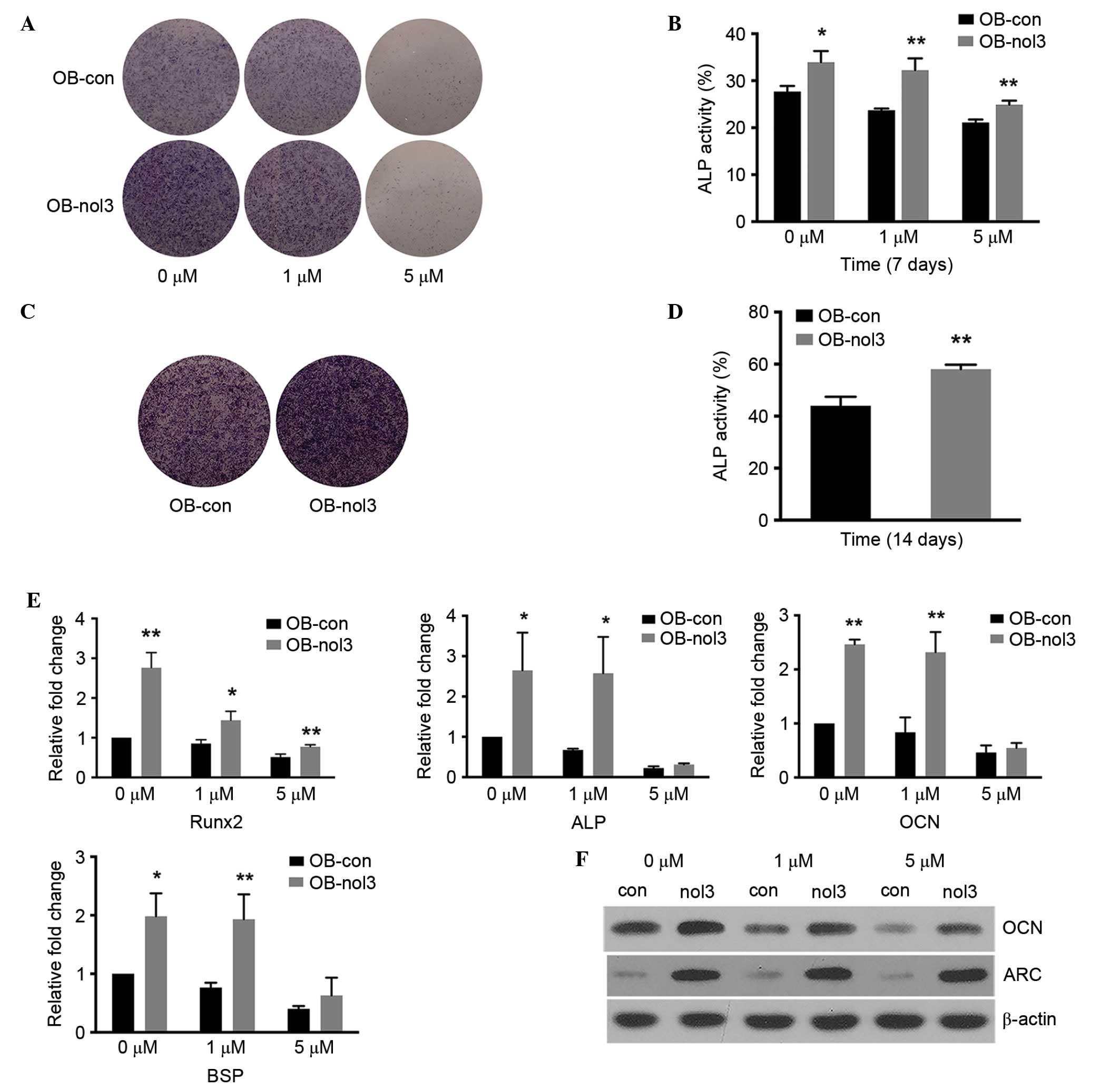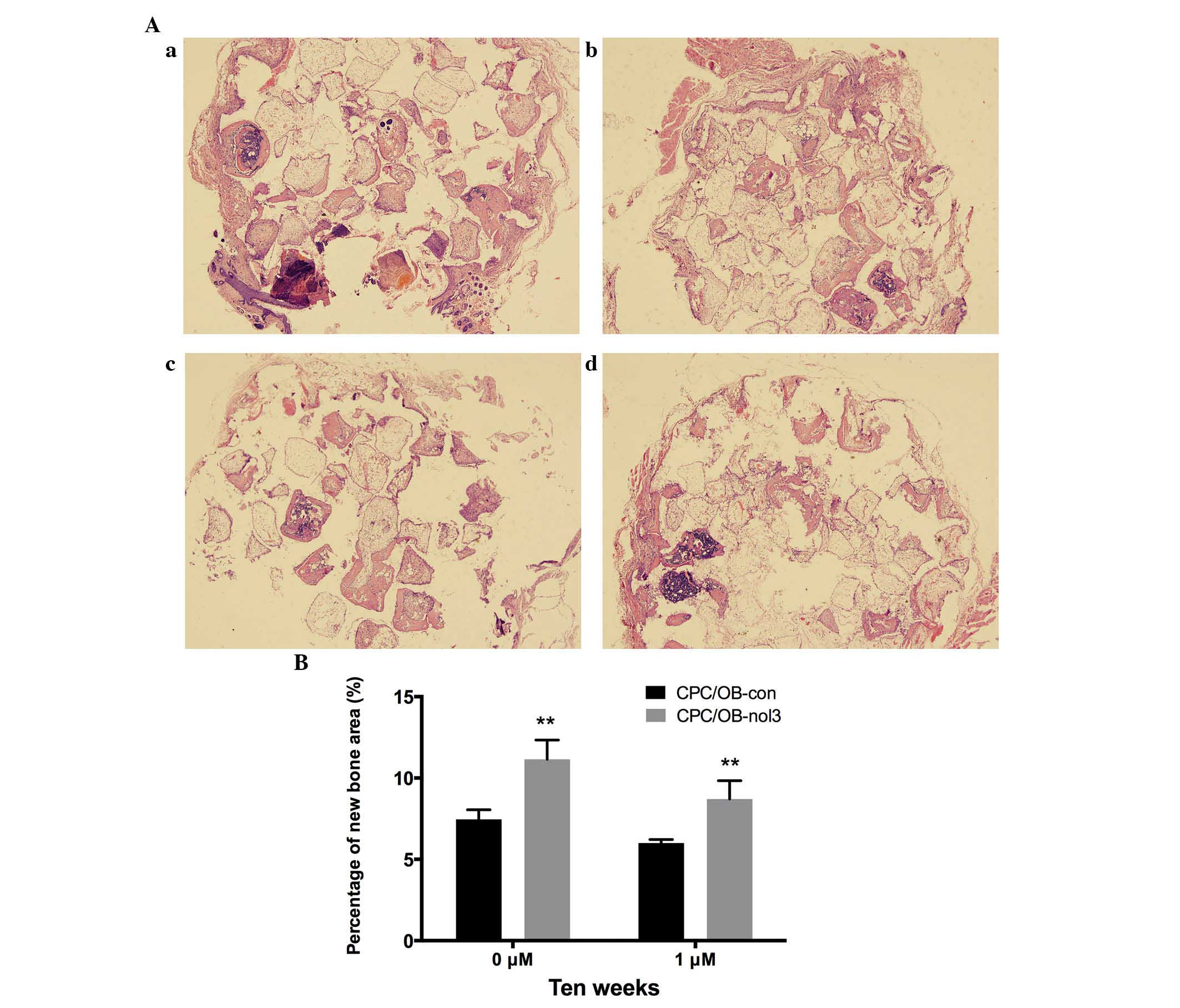|
1
|
Lewiecki EM: Safety of long-term
bisphosphonate therapy for the management of osteoporosis. Drugs.
71:791–814. 2011. View Article : Google Scholar : PubMed/NCBI
|
|
2
|
Baron R, Ferrari S and Russell RG:
Denosumab and bisphosphonates: Different mechanisms of action and
effects. Bone. 48:677–692. 2011. View Article : Google Scholar
|
|
3
|
Senaratne SG, Mansi JL and Colston KW: The
bisphosphonate zoledronic acid impairs Ras membrane [correction of
impairs membrane] localisation and induces cytochrome c release in
breast cancer cells. Br J Cancer. 86:1479–1486. 2002. View Article : Google Scholar : PubMed/NCBI
|
|
4
|
Kaiser T, Teufel I, Geiger K, Vater Y,
Aicher WK, Klein G and Fehm T: Bisphosphonates modulate vital
functions of human osteoblasts and affect their interactions with
breast cancer cells. Breast Cancer Res Treat. 140:35–48. 2013.
View Article : Google Scholar : PubMed/NCBI
|
|
5
|
Tenta R, Sourla A, Lembessis P and
Koutsilieris M: Bone-related growth factors and zoledronic acid
regulate the PTHrP/PTH.1 receptor bioregulation systems in MG-63
human osteosarcoma cells. Anticancer Res. 26:283–291.
2006.PubMed/NCBI
|
|
6
|
Hu L, Han J, Pan H and Xu L: High
concentration of zoledronate inhibits osteogenesis differentiation
and promotes apoptosis of human osteoblasts. China Journal of
Stomatology. 24:389–394. 2015.
|
|
7
|
Li Y, Ge X and Liu X: The cardioprotective
effect of postconditioning is mediated by ARC through inhibiting
mitochondrial apoptotic pathway. Apoptosis. 14:164–172. 2009.
View Article : Google Scholar : PubMed/NCBI
|
|
8
|
Li YZ, Liu XH, Zhu XM and Cai LR: ARC
contributes to the inhibitory effect of preconditioning on
cardiomyocyte apoptosis. Apoptosis. 12:1589–1595. 2007. View Article : Google Scholar : PubMed/NCBI
|
|
9
|
Hong YM, Jo DG, Lee JY, Chang JW, Nam JH,
Noh JY, Koh JY and Jung YK: Down-regulation of ARC contributes to
vulnerability of hippocampal neurons to ischemia/hypoxia. FEBS
Lett. 543:170–173. 2003. View Article : Google Scholar : PubMed/NCBI
|
|
10
|
Koseki T, Inohara N, Chen S and Núñez G:
ARC, an inhibitor of apoptosis expressed in skeletal muscle and
heart that interacts selectively with caspases. Proc Natl Acad Sci
USA. 95:5156–5160. 1998. View Article : Google Scholar : PubMed/NCBI
|
|
11
|
Jo DG, Jun JI, Chang JW, Hong YM, Song S,
Cho DH, Shim SM, Lee HJ, Cho C, Kim DH and Jung YK: Calcium binding
of ARC mediates regulation of caspase 8 and cell death. Mol Cell
Biol. 24:9763–9770. 2004. View Article : Google Scholar : PubMed/NCBI
|
|
12
|
Brenner D and Mak TW: Mitochondrial cell
death effectors. Curr Opin Cell Biol. 21:871–877. 2009. View Article : Google Scholar : PubMed/NCBI
|
|
13
|
Aino M, Nishida E, Fujieda Y, Orimoto A,
Mitani A, Noguchi T, Makino H, Murakami S, Umezawa A, Yoneda T and
Saito M: Isolation and characterization of the human immature
osteoblast culture system from the alveolar bones of aged donors
for bone regeneration therapy. Expert Opin Biol Ther. 14:1731–1744.
2014. View Article : Google Scholar : PubMed/NCBI
|
|
14
|
Livak KJ and Schmittgen TD: Analysis of
relative gene expression data using real-time quantitative PCR and
the 2(−Delta Delta C(T)) method. Methods. 25:402–408. 2001.
View Article : Google Scholar
|
|
15
|
Wang XJ, Huang H, Yang F, Xia LG, Zhang
WJ, Jiang XQ and Zhang FQ: Ectopic study of tissue-engineered bone
complex with enamel matrix proteins, bone marrow stromal cells in
porous calcium phosphate cement scaffolds, in nude mice. Cell
Prolif. 44:274–282. 2011. View Article : Google Scholar : PubMed/NCBI
|
|
16
|
Wiemer AJ, Tong H, Swanson KM and Hohl RJ:
Digeranyl bisphosphonate inhibits geranylgeranyl pyrophosphate
synthase. Biochem Biophys Res Commun. 353:921–925. 2007. View Article : Google Scholar : PubMed/NCBI
|
|
17
|
Xing LP and Boyce BF: Regulation of
apoptosis in osteoclasts and osteoblastic cells. Biochem Biophys
Res Commun. 328:709–720. 2005. View Article : Google Scholar : PubMed/NCBI
|
|
18
|
Ebert R, Zeck S, Krug R, Meissner-Weigl J,
Schneider D, Seefried L, Eulert J and Jakob F: Pulse treatment with
zoledronic acid causes sustained commitment of bone marrow derived
mesenchymal stem cells for osteogenic differentiation. Bone.
44:858–864. 2009. View Article : Google Scholar : PubMed/NCBI
|
|
19
|
Daubiné F, Le Gall C, Gasser J, Green J
and Clézardin P: Antitumor effects of clinical dosing regimens of
bisphosphonates in experimental breast cancer bone metastasis. J
Natl Cancer Inst. 99:322–330. 2007. View Article : Google Scholar : PubMed/NCBI
|
|
20
|
Manzano-Moreno FJ, Ramos-Torrecillas J, De
Luna-Bertos E, Ruiz C and García-Martínez O: High doses of
bisphosphonates reduce osteoblast-like cell proliferation by
arresting the cell cycle and inducing apoptosis. J Craniomaxillofac
Surg. 43:396–401. 2015. View Article : Google Scholar : PubMed/NCBI
|
|
21
|
Cheong S, Sun S, Kang B, Bezouglaia O,
Elashoff D, McKenna CE, Aghaloo TL and Tetradis S: Bisphosphonate
uptake in areas of tooth extraction or periapical disease. J Oral
Maxillofac Surg. 72:2461–2468. 2014. View Article : Google Scholar : PubMed/NCBI
|
|
22
|
Chen LH, Jiang CC, Watts R, Thorne RF,
Kiejda KA, Zhang XD and Hersey P: Inhibition of endoplasmic
reticulum stress-induced apoptosis of melanoma cells by the ARC
protein. Cancer Res. 68:834–842. 2008. View Article : Google Scholar : PubMed/NCBI
|
|
23
|
Mercier I, Vuolo M, Jasmin JF, Medina CM,
Williams M, Mariadason JM, Qian H, Xue X, Pestell RG, Lisanti MP
and Kitsis RN: ARC (apoptosis repressor with caspase recruitment
domain) is a novel marker of human colon cancer. Cell Cycle.
7:1640–1647. 2008. View Article : Google Scholar : PubMed/NCBI
|
|
24
|
Wang M, Qanungo S, Crow MT, Watanabe M and
Nieminen AL: Apoptosis repressor with caspase recruitment domain
(ARC) is expressed in cancer cells and localizes to nuclei. FEBS
Lett. 579:2411–2415. 2005. View Article : Google Scholar : PubMed/NCBI
|













